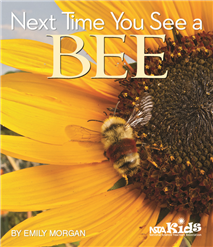Modern 3Rs
By Gabe Kraljevic
Posted on 2019-07-27
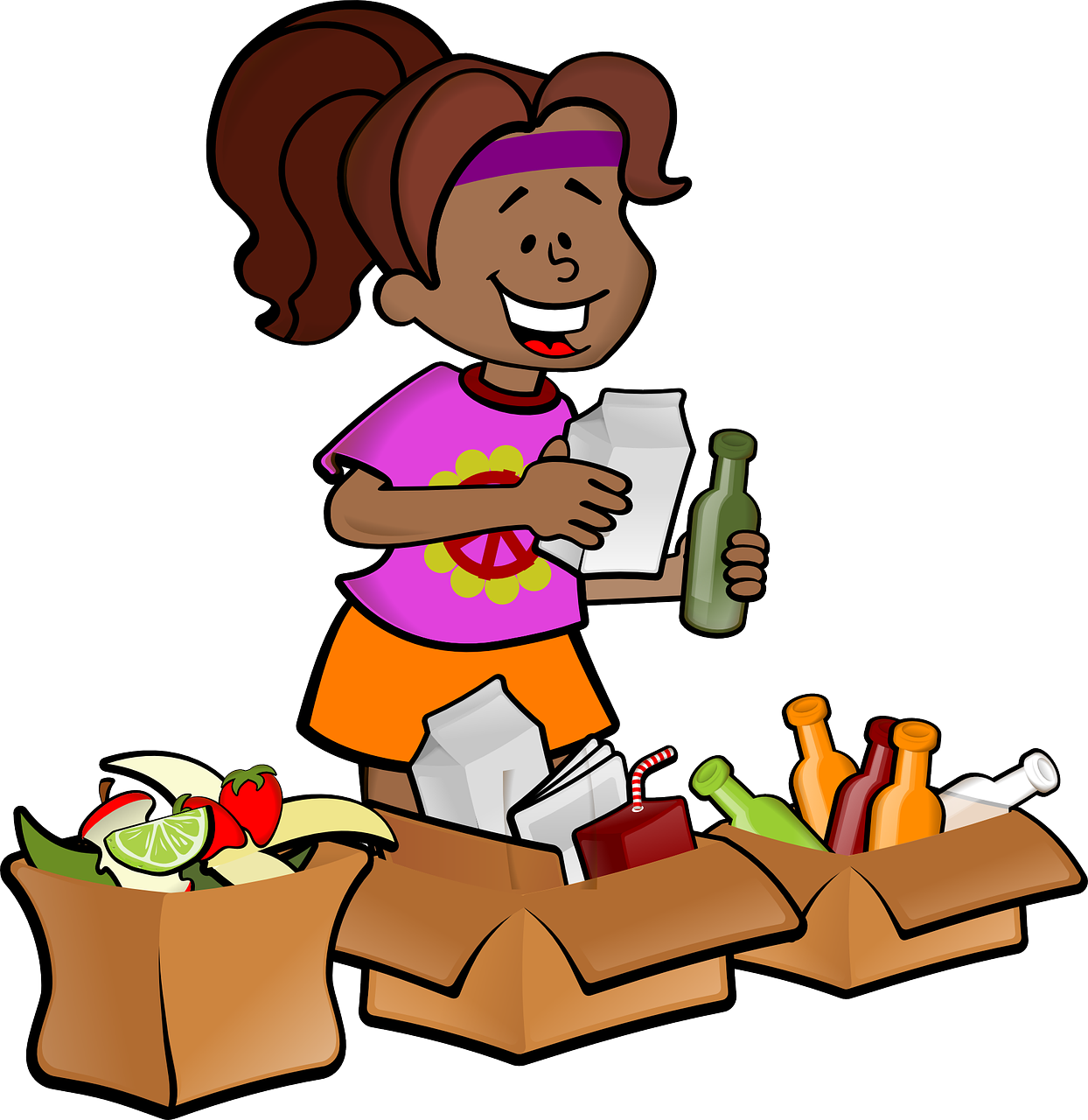 I had a hard time figuring out a way to get my second-grade students involved with recycling or something with the 3Rs. So, I was just wondering if you had any suggestions on something better?
I had a hard time figuring out a way to get my second-grade students involved with recycling or something with the 3Rs. So, I was just wondering if you had any suggestions on something better?
— N., Massachusetts
While all three of the Rs (Reduce, Reuse, Recycle) are important, I find that we really only concentrate on one: recycle. Reducing our use of resources, which in turn reduces energy consumption and waste, is the ideal first step.
For your young class I recommend starting with awareness. Identify and quantify the waste in your classroom. This integrates math, observation, measuring, and sorting skills. Introduce how to display and present their collected data. Students can research how the different items are produced and how they behave in the environment.
Once the students have a base line of their waste production, brainstorm ways to reduce the amount. This may include communicating the students’ ideas to parents. Ask the class if there is refuse that could be replaced with reusable items such forks, spoons, and water bottles. Identify the items still being discarded that can be recycled and research recycling options.
Continue quantifying how much waste your students produce and track results as they try different strategies to reduce it. Don’t forget to update the display!
Once your students become 3R practitioners, consider introducing them to advocacy. They can create posters, make presentations to other classes, set up an information booth with literature for the other students in the school.
Your 3R program has now become a complete cross-curricular project!
Hope this helps!
Image credit: OpenClipart-Vectors from Pixabay
 I had a hard time figuring out a way to get my second-grade students involved with recycling or something with the 3Rs. So, I was just wondering if you had any suggestions on something better?
I had a hard time figuring out a way to get my second-grade students involved with recycling or something with the 3Rs. So, I was just wondering if you had any suggestions on something better?
— N., Massachusetts
Reflective questions for choosing resources or shaping your practice
By Peggy Ashbrook
Posted on 2019-07-26
Asking myself about my teaching practice and looking for evidence to answer reflective questions (see Resources) that support my growth as an educator means considering how I collect data when working with children or adults.
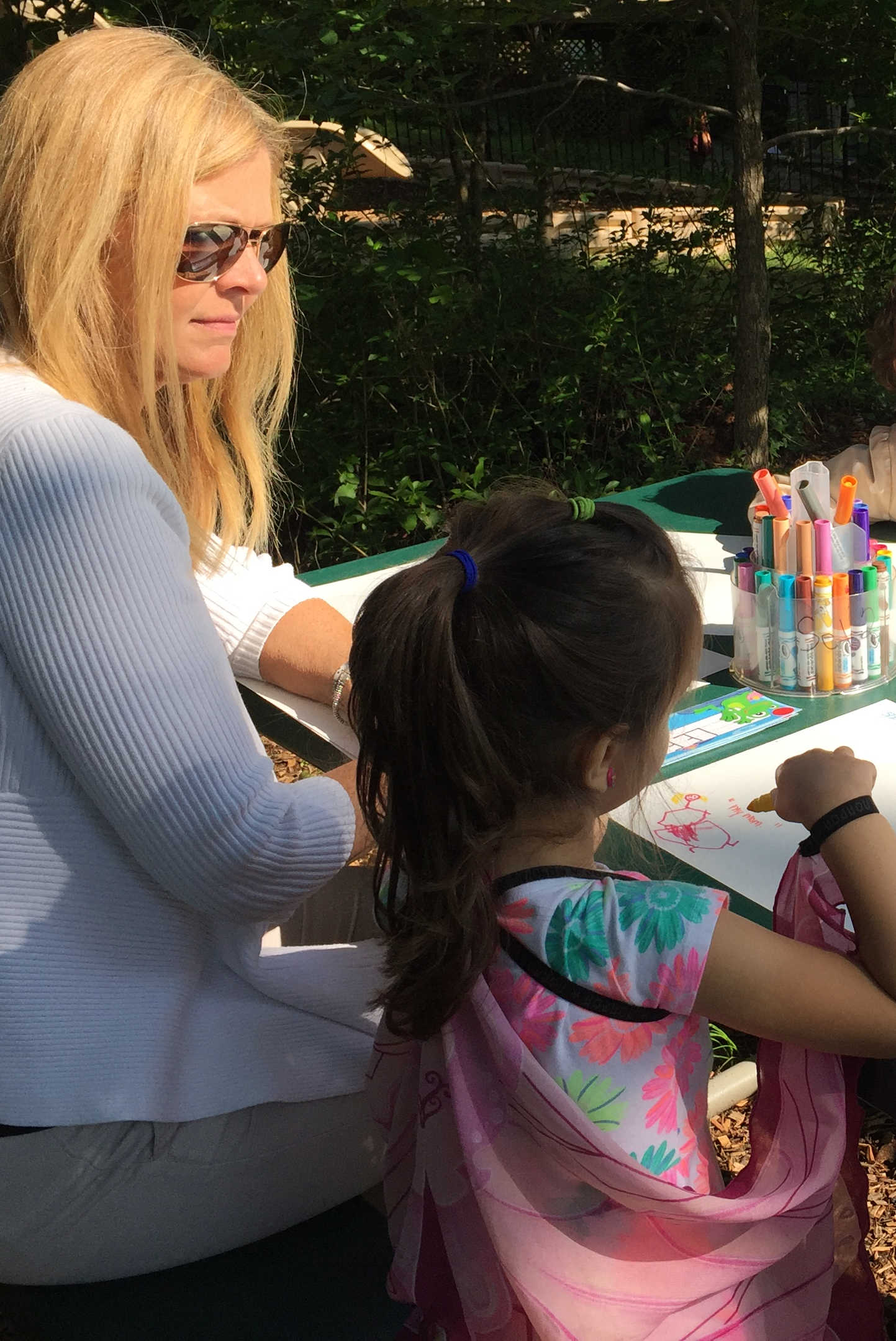
Reflective questions from the Thinking LensTM guide lead teacher Brian Silveria’s support of, and participation in, his children’s discoveries in their exploration of natural phenomena such as the flow of rain water (Silveria with Curtis 2018.) Members of the NAEYC Early Childhood Science Interest Forum (ECSIF) (Peterson et al 2019) discuss the use of online resources and provide two sets of questions we can use to tell if activities and lesson plans found on the web are of high quality. Use the questions tool to help determine if activities engage children in the practices of science and engineering (NRC 2013), don’t underestimate children’s abilities to learn core science ideas, and provide the necessary time children will need to deeply engage in meaningful scientific questions and engineering problems. And to avoid craft-only, teacher demonstrations, or prescribed steps for children to follow exactly.
Resources
Curtis, Deb, and Margie Carter, Debbie Lebo, Wendy C.M. Cividanes. 2013. Reflecting in Communities of Practice: A Workbook for Early Childhood Educators. Redleaf Press. https://www.redleafpress.org/Reflecting-in-Communities-of-Practice-A-Workbook-for-Early-Childhood-Educators-P2353.aspx
NRC. 2013. Next Generation Science Standards: For States, By States. Washington, DC: The National Academies Press. www.nextgenscience.org/next-generation-science-standards.
Peterson, Sherri, and Cindy Hoisington, Peggy Ashbrook, Beth Dykstra Van Meeteren, Rosemary Geiken, Sonia Akiko Yoshizawa, Sandy Chilton and Joseph B. Robinson. 2019. To Pin or Not to Pin? Choosing, Using, and Sharing High-Quality STEM Resources. Young Children. 74(3): 79-85. https://www.naeyc.org/resources/pubs/yc/jul2019/high-quality-stem-resources
Silveria, Brian, with Deb Curtis. 2018. Look, Listen, Learn. Where Does the Rain Go? Considering the Teacher’s Role in Children’s Discoveries. Teaching Young Children. 11(5): 22-23. https://www.naeyc.org/resources/pubs/tyc/aug2018/considering-teachers-role-childrens-discoveries
A Thinking LensTM for Reflection and Inquiry. https://www.uwyo.edu/wind/_files/docs/echo/ec-resources/session-materials-thinking-lens-1.pdf
Asking myself about my teaching practice and looking for evidence to answer reflective questions (see Resources) that support my growth as an educator means considering how I collect data when working with children or adults.
Safety Blog
How Safe Are Biological Stains?
By Kenneth Roy
Posted on 2019-07-22
In middle and high school science labs, biological stains, such as basic fuchsin, crystal violet, and Congo red, are used to enhance properties of microscopic plant and animal cells/tissues. Fortunately, Safety Data Sheets (SDS) note that some of these popular stains may contain suspected carcinogens, toxins, and mutagens.
Potential Hazards and Risks
When assessing safety for chemicals in the lab, always use the AAA approach: Hazard Analysis, Risk Assessment, and Safety Action.
To begin, determine the hazard analysis and resulting risk assessment using a free online document titled “Handbook of Biological Dyes and Stains Synthesis and Industrial Applications.” In addition, the IHC World Life Science Products & Services: ABC of Safety in the Biological Sciences provides a quick health and safety summary of many biological stains in a chart form.
Next, check out the chemical nature of the biological stain being considered. OSHA’s Hazard Communication Standard (HCS) mandates that manufacturers and suppliers of biological stains provide Safety Data Sheets (SDSs) share information with laboratory occupants on hazardous chemical products. The following sections are some of the most important to review before using biological stain.
Section 2, Hazard(s) identification includes all hazards regarding the chemical; required label elements.
Section 8, Exposure controls/personal protection lists OSHA’s Permissible Exposure Limits (PELs); Threshold Limit Values (TLVs); appropriate engineering controls; personal protective equipment (PPE).
Section 11, Toxicological information includes routes of exposure; related symptoms, acute and chronic effects; numerical measures of toxicity.
The following biological stains are examples that present specific health and safety concerns.
Basic fuchsin has carcinogenic effects and mutagenic effects (Mutagenic for mammalian somatic cells and for bacteria and/or yeast.) It may cause damage to the following organs: blood, liver, spleen, thyroid.
Crystal violet has evidence of a teratogenic effect (birth defect) and can also effect
the cardiovascular and respiratory systems.
Methyl blue leads to the formation of methemoglobin, which can cause cyanosis, vomiting, diarrhea, nausea, dizziness, and headaches.
Eosin Y may be fatal or cause blindness if swallowed. Effects due to ingestion include gastrointestinal disturbance, headache, nausea, vomiting, dizziness, weakness, confusion, drowsiness, and unconsciousness.
Lastly, determine if there are any alternative means of staining available that are safer to use. One can post queries on the biology, chemistry, or general science NSTA list serves. If there is insufficient information that would warrant banning a particular biological stain, be sure to take the appropriate safety action. For example, check out the SDS Section 8 relative to personal protective equipment is adhered to when using the stain.
Submit questions regarding safety to Ken Roy at safersci@gmail.com or leave him a comment below. Follow Ken Roy on Twitter: @drroysafersci.
NSTA resources and safety issue papers
Join NSTA
Follow NSTA
In middle and high school science labs, biological stains, such as basic fuchsin, crystal violet, and Congo red, are used to enhance properties of microscopic plant and animal cells/tissues. Fortunately, Safety Data Sheets (SDS) note that some of these popular stains may contain suspected carcinogens, toxins, and mutagens.
Potential Hazards and Risks
When assessing safety for chemicals in the lab, always use the AAA approach: Hazard Analysis, Risk Assessment, and Safety Action.
Two NSTA Books Encourage Young Readers to Keep Questioning, Searching, and Expressing Wonder
By Carole Hayward
Posted on 2019-07-20
NSTA Press author Emily Morgan wants young readers of her books to be filled with a sense of wonder about ordinary objects or phenomena—like bees—and to never stop exploring the “whys” of our natural world.
Two books that every K-5 teacher should add to their classroom collections are Never Stop Wondering and Next Time You See a Bee.
Jacqui Crocetta’s engaging illustrations bring Morgan’s delightful rhymes to life in Never Stop Wondering, which implores its readers to keep questioning, searching, and trying to figure things out, because, “That is what science is all about.”
Students are introduced to physician and mathematician Sir Isaac Newton; astronaut Dr. Mae Jemison; and oceanographer Dr. Sylvia Earle. Morgan encourages her readers to emulate these great thinkers’ wondering minds by:
- Studying the world;
- Looking for changes and patterns;
- Trying to predict what comes next;
- Asking why things happen;
- Testing ideas;
- Noticing the structure and function of objects; and
- Calculating scale, proportion, and quantity.
Realizing that all scientific discovery occurred after many fits and starts, recalculations, etc., Morgan reminds her readers that it’s OK to have more questions than answers, to say, “I don’t know.”
“Celebrate what you learned , try another idea, keep your eyes, ears, and mind opened up,” she says.
Science as boring, dull, or dry? No way. After reading this book students will understand just how exciting, fun, and inspiring the field of science is!
At the beginning of Next Time You See a Bee, Morgan includes an important note to parents and teachers: She intends for this book to be read after children have had some experience with these fascinating insects.
Morgan wants educators and/or families to take children outside on a warm, sunny day and observe bees as they fly from flower to flower; take photos or slow-motion videos; talk with children and share collective wonder, such as:
- Why is the bee visiting these flowers?
- Is there any kind of pattern to the way it moves?
- What is that yellow stuff sticking to its body?
The author acknowledges that some children may initially fear bees, but her hope is that when they learn how important bees are to humans and the planet, that they develop an appreciation for all that they do for us.
The gorgeous, high-resolution photos of bees and other pollinators that accompany Morgan’s storytelling strongly reinforce the sense of wonder she wants to convey. Hard to imagine anyone, child or adult, not wanting to pore over every single detail found in a chose-up shot of a bee completely saturated with yellow pollen while feasting on a sunflower.
At the end of the book, the bees in each photo are identified, and activities, websites, and references are included to supplement the learning.
Did you know that there are more than 4,000 species of wild bees in North America? Thanks to this book, the next time you and your students see a bee you’ll be chockfull of knowledge. And wonder.
Hot Air Science
By Gabe Kraljevic
Posted on 2019-07-20
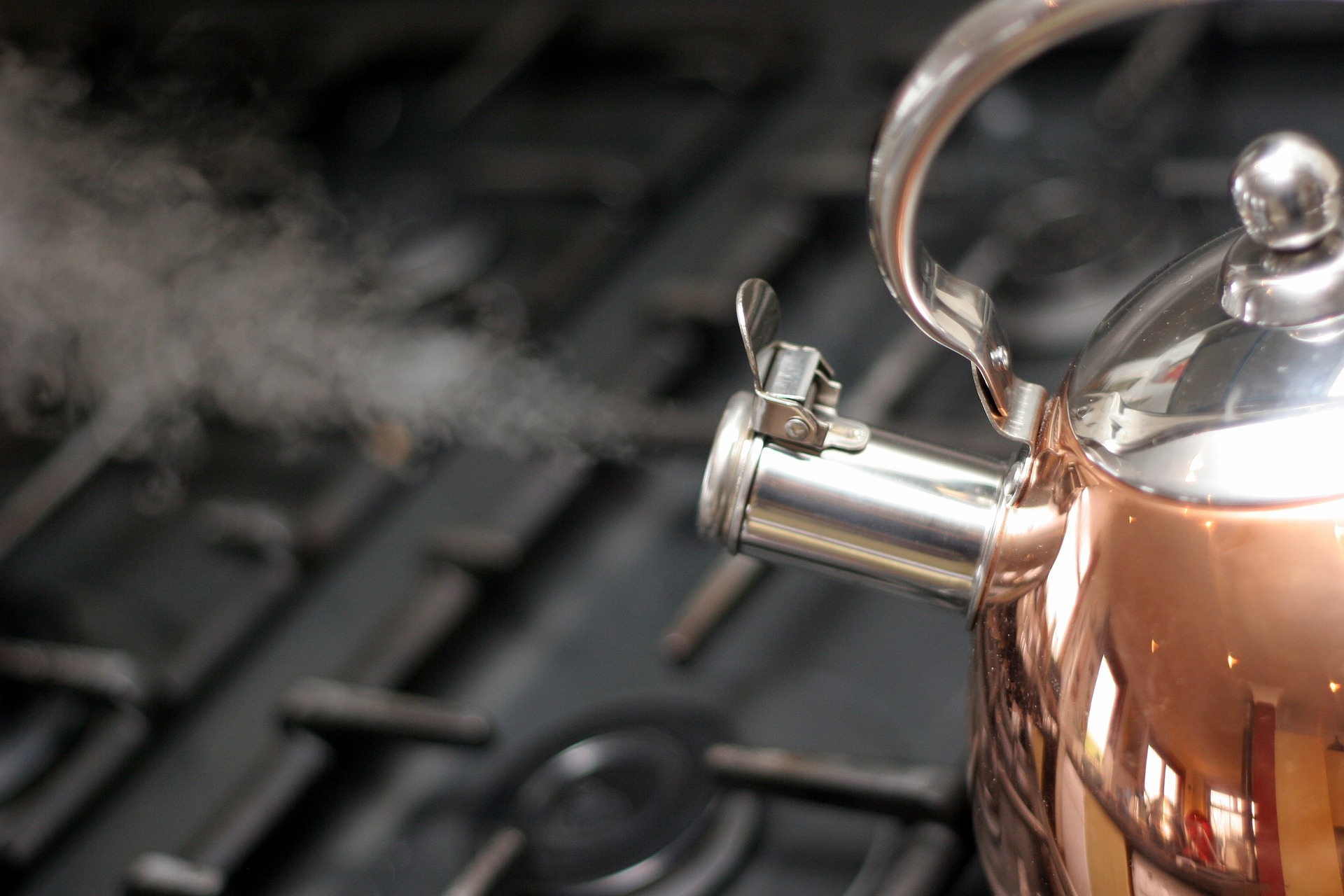 I want to demonstrate different states of matter and need activities for third graders for gases.
I want to demonstrate different states of matter and need activities for third graders for gases.
— D., Georgia
It’s hard to teach about something we can’t see!
Here are a few ideas:
Perfumes: Open a bottle of cologne in the room. Students can observe evaporation if you pour some on a dark counter.
Solid room air fresheners: This is a scented material in solid form and, over time, you will see the solid disappear as it sublimates.
“Ghost” in a Bottle: (Have theatrical fun with this.) Refrigerate a large, empty pop bottle before class. Bring it to class, open it and place a coin over the opening. In a few moments you will hear the coin rattling as the gas inside the bottle heats and expands.
Crushing a can: (Practice this demo for safety.) Boil a few mL of water in an aluminum can until steam comes out. Grasp the can with tongs and quickly turn it upside down into a pan of ice water. The steam condenses, emptying the can of a lot of gas. Atmospheric pressure outside is now greater than the pressure inside the can, causing it to crush.
Break a ruler using air: place a wooden ruler half way over the edge of a table. Flatten a full sheet of newspaper across the ruler. A forceful karate chop should break the ruler. The large surface area of the newspaper has substantial atmospheric mass pushing down on it, holding the ruler in place.
Hope this helps!
Image credit: Ken Boyd via Pixabay
 I want to demonstrate different states of matter and need activities for third graders for gases.
I want to demonstrate different states of matter and need activities for third graders for gases.
— D., Georgia
It’s hard to teach about something we can’t see!
Here are a few ideas:
Perfumes: Open a bottle of cologne in the room. Students can observe evaporation if you pour some on a dark counter.
Helping Students Take Control of Their Learning
By Cindy Abel
Posted on 2019-07-17
I am responsible for teaching my students how to think, learn, solve problems, and make informed decisions. I firmly believe that science is everywhere and affects all aspects of our daily lives, from the food we eat to the way we communicate. For these reasons, I have always made time for science in my classroom, alongside reading and math, and the more science I taught, the more connections between science and critical-thinking skills I realized.
For many years, my classroom was filled with carefully orchestrated experiments meant to excite and engage my students and guide them toward a preset conclusion. I was a master at linking concepts in science so my students could predict and understand my predetermined outcomes. I alone decided what I wanted them to learn and investigate. My strengths, weaknesses, and questions became theirs; unintentionally, I had eliminated their voice and replaced it with my own. I didn’t realize my flaws until I learned about the instructional shifts in the Next Generation Science Standards (NGSS).
When I was asked to travel to Nashville to help pilot a newly written fourth-grade curriculum based on the NGSS, I jumped at the chance. The NGSS were new to me, and I not only hoped to learn more about them, but also to score some free science materials.
Through this piloting opportunity, I learned that my core belief in the importance of science instruction was correct. According to the National Research Council (NRC) of the National Academies, “Understanding science and engineering, now more than ever, is essential for every American citizen.” The NRC’s A Framework for K-12 Science Education also states that “some knowledge of science and engineering is required to engage with the major public policy issues of today, as well as to make informed everyday decisions….In addition, understanding science and the extraordinary insights it has produced can be meaningful and relevant on a personal level, opening new worlds to explore and offering lifelong opportunities for enriching people’s lives.” (NRC 2012)
Although my core beliefs and teaching instincts were correct, my science practices were not. I learned a whole new way of teaching that turned everything I thought I knew about teaching science on its head, and it was all so simple: Let the students take control of their own learning.
Through the pilot, I was introduced to phenomenon-based teaching as a staple of the NGSS. The use of phenomena and student questions about phenomena are important shifts in three-dimensional learning. I began using anchor models and Driving Question Boards as vital instructional tools in my classroom. These models were not the well-crafted artistic showpieces I had used in the past, the ones I hung in a well-lit area and hoped students referred to on tests. Instead these “new” anchor charts are critical working documents, created with student ideas, that students continually refer to and update throughout the unit of study; these anchor charts chronicle my students’ progression of learning.
Before we begin to create the class anchor model, I introduce my fourth-grade students to an anchor phenomenon, such as the many rock layers of the Grand Canyon or how a windmill can harness wind and change it to light. Students create initial models individually, trying to explain the phenomenon on their own. Next they discuss and edit their work with a small group of peers. Finally, the class comes to a whole-group consensus and creates a class anchor model to explain the mechanism of the phenomenon.
I facilitate this process by using a whole-group discussion format. When one student suggests an addition to the model, classmates give a “thumbs-up” or “thumbs-down” signal to indicate whether they agree or disagree with it. If someone disagrees, we open the floor for discussion until we reach an agreement. As we try to model the phenomenon, students realize they don’t yet have all the information to make sense of what is happening.
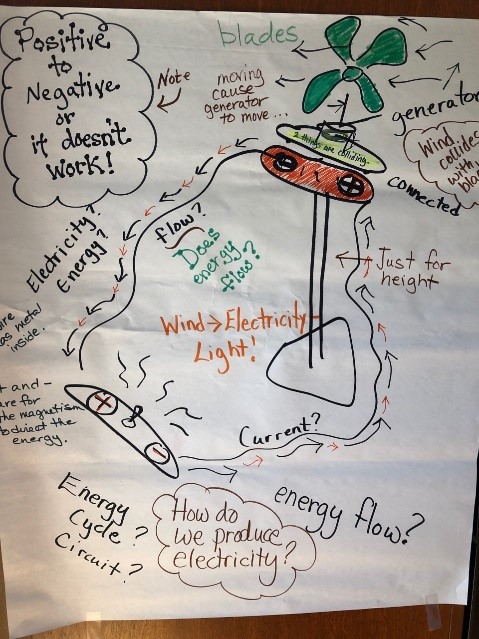
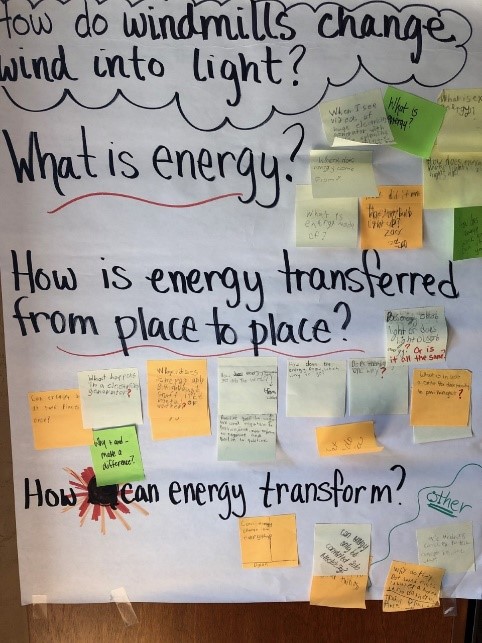
Driving Question Boards (DQBs) are in every module I teach. They are a staple of my NGSS classroom and underscore that student ideas drive the learning. A DQB is a living document that we refer to, update, and add to. On it, kids post their questions, their prior knowledge, and their observations about the anchor phenomenon. The DQB grows with the students’ learning.
Students write questions they have about the anchor phenomenon on sticky notes. We post them on a classroom chart and look for similarities among the questions, ensuring that every student participates and every voice is heard. Next we group the questions into three or four “big” questions that the entire class can investigate further. During this process, as students drive instruction through questioning, they become more engaged and improve their understanding of science as they work to make sense of the world around them.
Throughout the unit, we complete investigations to gather evidence and find answers to our questions. When students have drawn evidence-based conclusions from their investigations, we apply the new information to the anchor model and revisit the DQB to resolve earlier questions and add new questions. We repeat this process until all our questions have been answered and students can make sense of the anchor phenomenon.
My classroom has become more student-centered: Students take ownership of the science concepts they discover and responsibility for the acquisition of new knowledge and understandings. Simply put, my students take control of their own learning. When students go public with their ideas, they are placed in the drivers’ seat, which opens new worlds for them to explore. I empower them to become critical thinkers and prepare them to collaborate with others as they learn to make informed decisions in their everyday lives.
Reference
National Research Council (NRC). 2012. A framework for K-12 science education: Practices, crosscutting concepts, and core ideas. Washington, DC: National Academies Press.
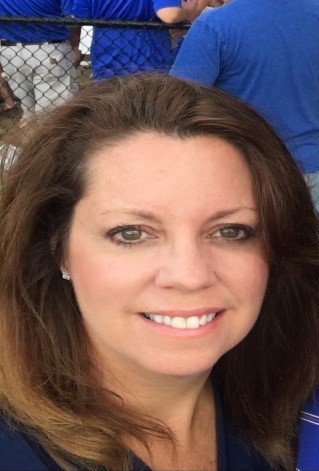
Cindy Abel teaches fourth grade at Robert C. Hill Elementary School in Romeoville, Illinois, a suburb of Chicago. She has a bachelor’s degree in elementary education from the University of Illinois at Chicago and a master’s in education from National Louis University. Abel resides in Plainfield, Illinois, with her husband and two children.
Note: This article is featured in the July issue of Next Gen Navigator, a monthly e-newsletter from NSTA delivering information, insights, resources, and professional learning opportunities for science educators by science educators on the Next Generation Science Standards and three-dimensional instruction. Click here to sign up to receive the Navigator every month.
Visit NSTA’s NGSS@NSTA Hub for hundreds of vetted classroom resources, professional learning opportunities, publications, ebooks and more; connect with your teacher colleagues on the NGSS listservs (members can sign up here); and join us for discussions around NGSS at an upcoming conference.
The mission of NSTA is to promote excellence and innovation in science teaching and learning for all.
I am responsible for teaching my students how to think, learn, solve problems, and make informed decisions. I firmly believe that science is everywhere and affects all aspects of our daily lives, from the food we eat to the way we communicate. For these reasons, I have always made time for science in my classroom, alongside reading and math, and the more science I taught, the more connections between science and critical-thinking skills I realized.
Next Gen Navigator
A Physics Teaching Approach That Supports Real-World Science by Matt Holsten
By Cindy Workosky
Posted on 2019-07-17
Traditional physics education can leave many students confused, bored, or without the conceptual understanding of the equations they are required to memorize. I prefer an approach that allows students to use evidence to express, clarify, and justify their ideas so they can form their own equations based on their conceptual understandings. It is much more meaningful and helps them understand how the equation really connects to the concept it models.
It is important that students discover relationships among variables on their own, before they can create a mathematical model of the concept they are studying. Students can use the data they collect in a lab or activity to justify to their teacher and peers why they placed variables in their respective places within an equation—something the 5E Instructional Model supports. The 5E Model leads to greater understanding of science concepts, and it lends itself very well to NGSS implementation. I use the 5E Model as a template for equation discovery in the physics classroom. To show how this can be done in the classroom, I’ll explain how my students engage in each step of the 5E process in an equation discovery station lab for torque—a force that causes an object to rotate.
I begin by engaging students in an activity that catches their attention. To introduce torque, I ask the tallest and shortest students to help me with a demonstration. I ask the entire class to move to the classroom door. The biggest student pushes to open the door at the hinge while the smaller student tries to close it by pushing with a pointer finger by the door handle.
When the door easily closes, I ask students to share with the person standing next to them (while I listen in) their initial ideas as to why the door closed. What was different between Student A’s and B’s push? This exchange is very informal, as it is intended to simply open their minds to the new concept. For safety purposes, I sometimes model the demonstration first, but I always give students the opportunity to try it afterward.
I then give students the chance to explore the topic on their own, with my guidance as needed, by engaging them in conceptual station lab activities. These activities help them determine the values that concepts are directly or inversely proportional to. I set up different activities at each station with a whiteboard or large piece of paper and give each group a different colored marker. My students perform a unique experiment at each station, write what they did on the whiteboard, and record an observation. They cycle from station to station, performing experiments and developing their understanding of the concept.
For a torque lab, I set up stations that include a balancing meter stick, students “fishing” for hooked masses with a meter stick with strings to hook the mass at different points, a PhET Interactive Simulation to demonstrate rotational equilibrium, and a loop of string tied around the pages of a textbook that students attempt to open. All these stations allow students to perform experiments that test the relationship between torque (T) and the variables it depends on: distance from the axis of rotation (r) and the applied force (F). As they complete each station, they write what they did to determine if T is directly or inversely related to r and/or F and what result led them to that conclusion. One of the best things about these activities is their simplicity; you don’t need expensive equipment for your students to be able to do them.
When students have finished the activities, I ask them to bring their whiteboards to the front of the room and read their experiments and results aloud to the class. Student data and thoughts drive the conversation about what the torque concept is directly and inversely proportional to.
I give students a worksheet that lets them organize their thoughts, and when they have completed it, they ask me to “check it.” It’s not important if their ideas are correct at this point, as long as they have logical justification for their thoughts. When students have finished discussing their results with their original groups, they form new groups with at least one person from each of the original groups. My students discuss their final results with their new groups using specific data from the lab, come to consensus on an equation, and justify their thoughts with evidence from the investigations they completed.
After the equation has been formulated, I work with students to extend their knowledge. They typically are proud of the equation they created for themselves, and they understand how the equation actually connects to the real-world concept. I then give them real-world scenarios, and students begin working on practice problems. Calculations and practice problems have their place in the physics classroom, but now that students truly understand the concepts, calculations and practice problems are much more meaningful.
Finally, I evaluate student understanding, and the students evaluate their understanding themselves. I evaluate my students using an open-ended assessment that matches the learning style. Sometimes I use a student-designed Problem-Based Learning lab in which they create their own procedures to model and test a real-world problem. I use the ideas students communicate through their lab report to assess their understanding of the concepts.
Learning physics this way helps students build conceptual understanding, rather than simply learning to plug numbers into an equation. They see it as a mathematical model for a real-world concept. Science classes taught in this way are true to how science is conducted in the real world.
Typically, as students progress through science courses in school, the discovery process is replaced by the “prove this is right” process. But when scientists set out to explain something they don’t understand, they don’t know the results, so why should the way our students develop their understanding of physics be any different?
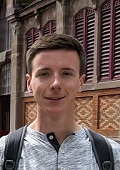
Matt Holsten is a physics and physical science teacher at Hightstown High School in East Windsor, New Jersey. He graduated from The College of New Jersey in 2016 and has been named one of New Jersey’s Top 30 Teachers Under 30 by the New Jersey Education Association Holsten plans to pursue a master’s degree and eventually a PhD in physics education. He is the proud “fur father” of a two-year-old adopted Chocolate Lab who keeps him very busy.
Note: This article is featured in the July issue of Next Gen Navigator, a monthly e-newsletter from NSTA delivering information, insights, resources, and professional learning opportunities for science educators by science educators on the Next Generation Science Standards and three-dimensional instruction. Click here to sign up to receive the Navigator every month.
Visit NSTA’s NGSS@NSTA Hub for hundreds of vetted classroom resources, professional learning opportunities, publications, ebooks and more; connect with your teacher colleagues on the NGSS listservs (members can sign up here); and join us for discussions around NGSS at an upcoming conference.
The mission of NSTA is to promote excellence and innovation in science teaching and learning for all.
Future NSTA Conferences
2019 National Conference
STEM Forum & Expo
2019 Fall Conferences
Traditional physics education can leave many students confused, bored, or without the conceptual understanding of the equations they are required to memorize. I prefer an approach that allows students to use evidence to express, clarify, and justify their ideas so they can form their own equations based on their conceptual understandings. It is much more meaningful and helps them understand how the equation really connects to the concept it models.



